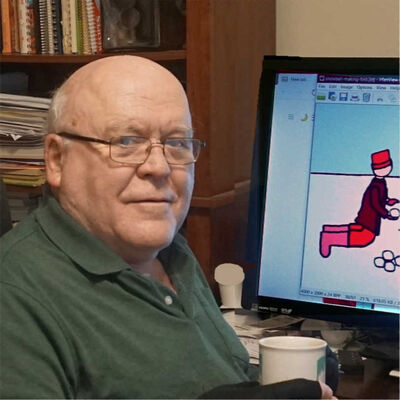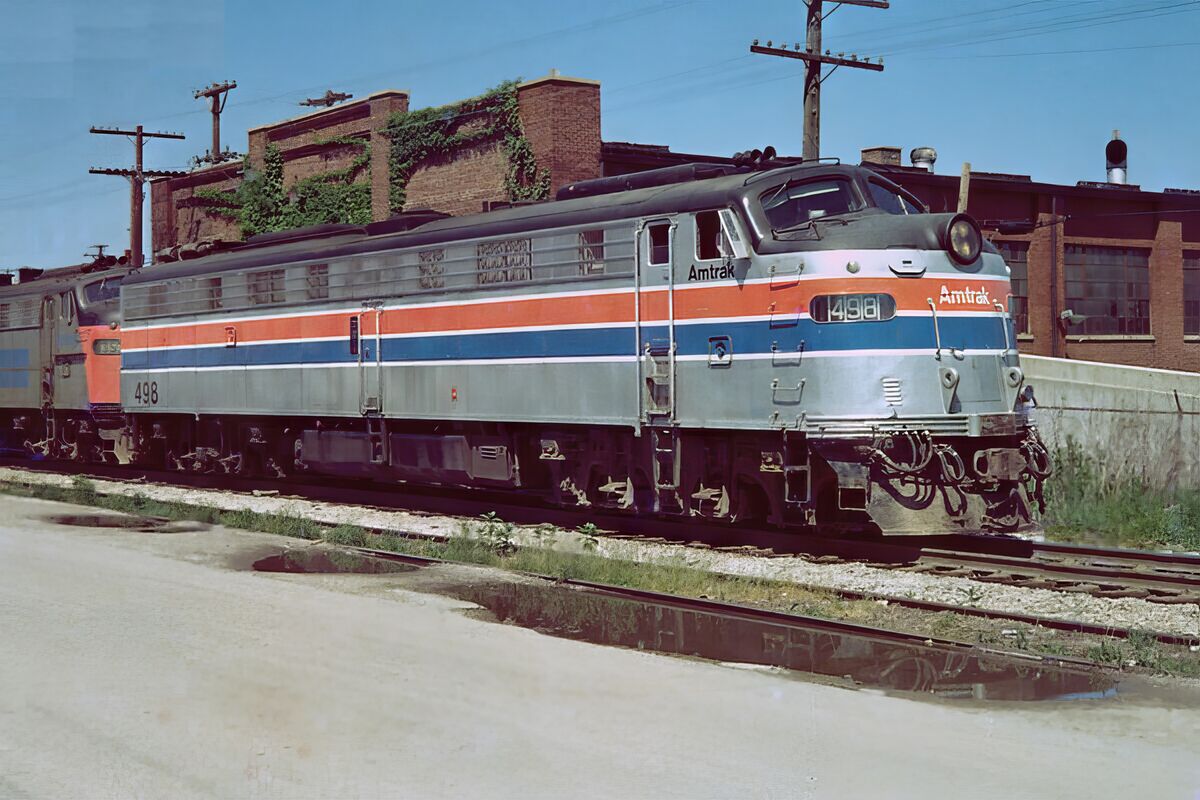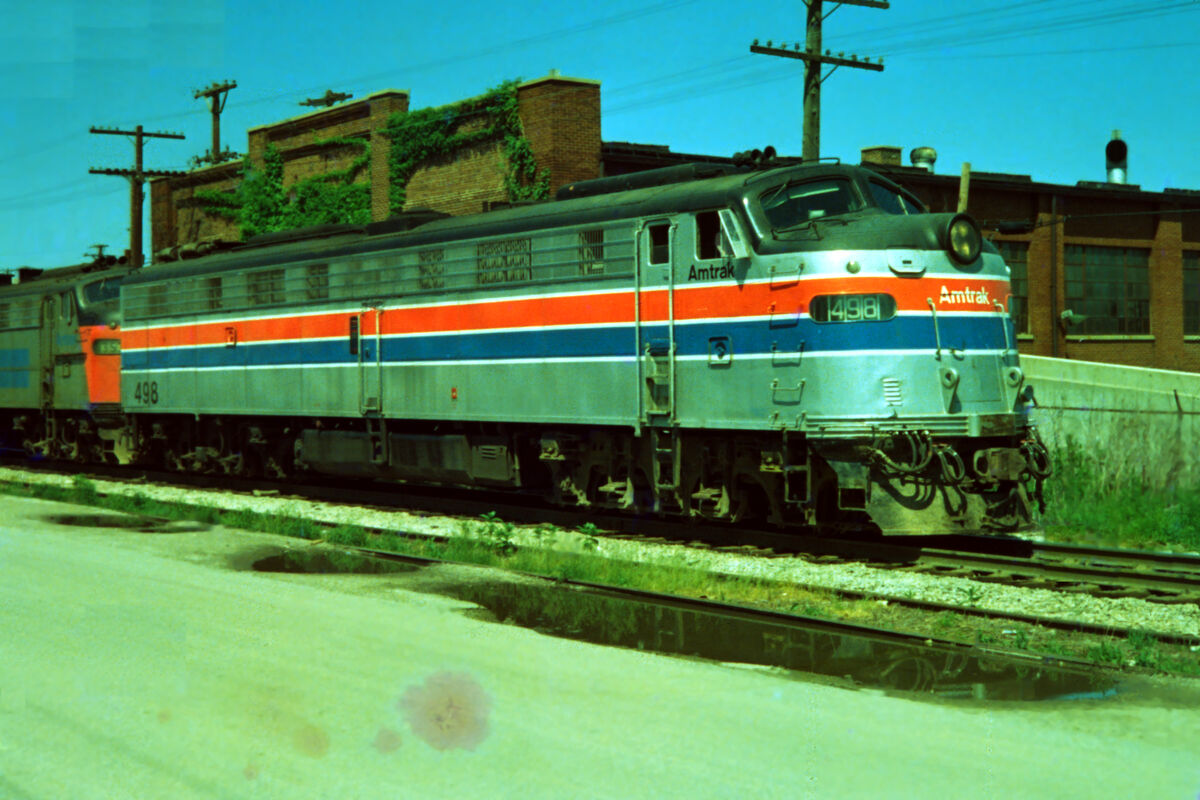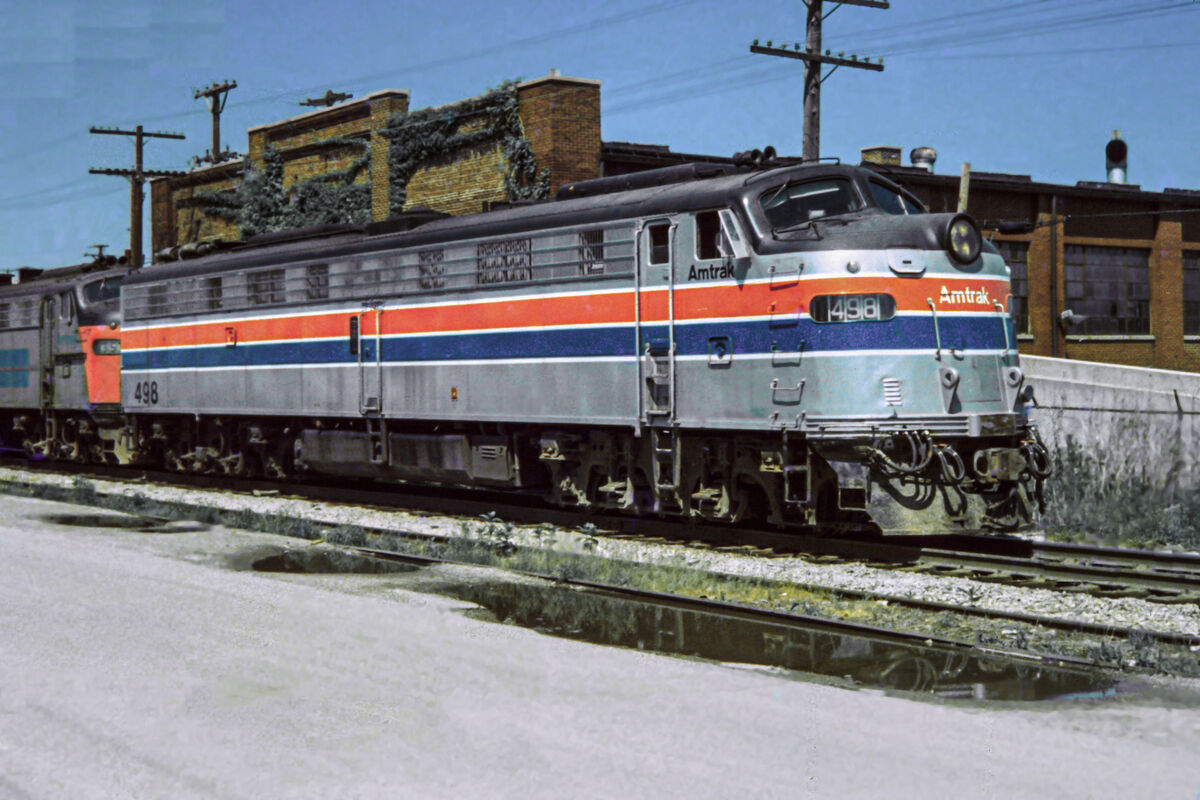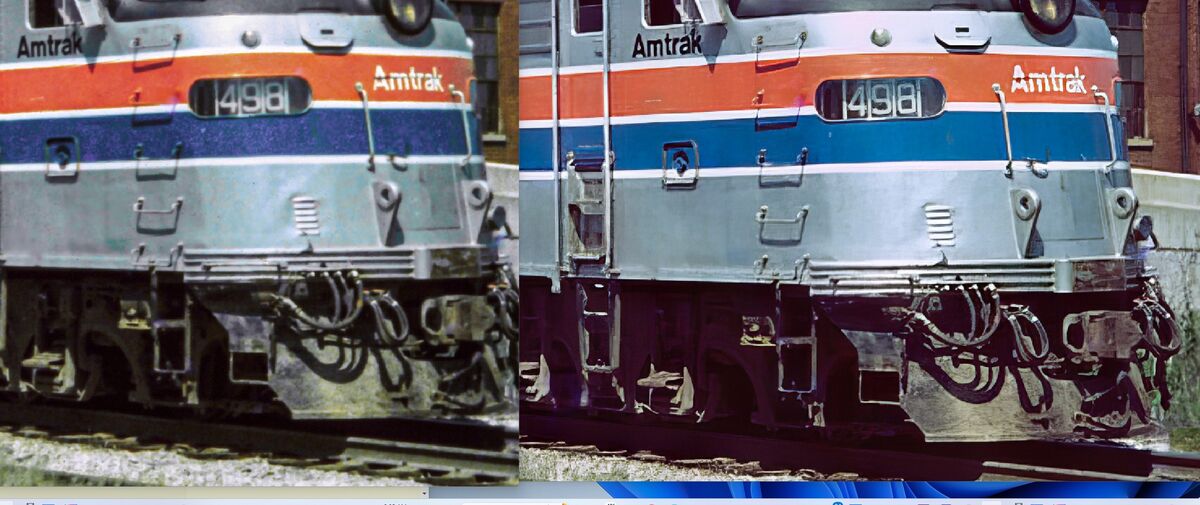Chicago to Miami
Mar 4, 2023 11:46:11 #
In the early days of Amtrak - mid 1970's - they used old 'legacy' cars to build trains for a Chicago-Miami service. I was a grad student at Indiana University, Bloomington, Indiana, in those days, and took these photos. These days, the Illinois Central tracks thru Bloomington are operated by a small regional railroad, and the L&N tracks (on which the train went thru town) are a walking trail.
"Phase Two" E-8 locomotive {followed by 'Phase One" locomotive
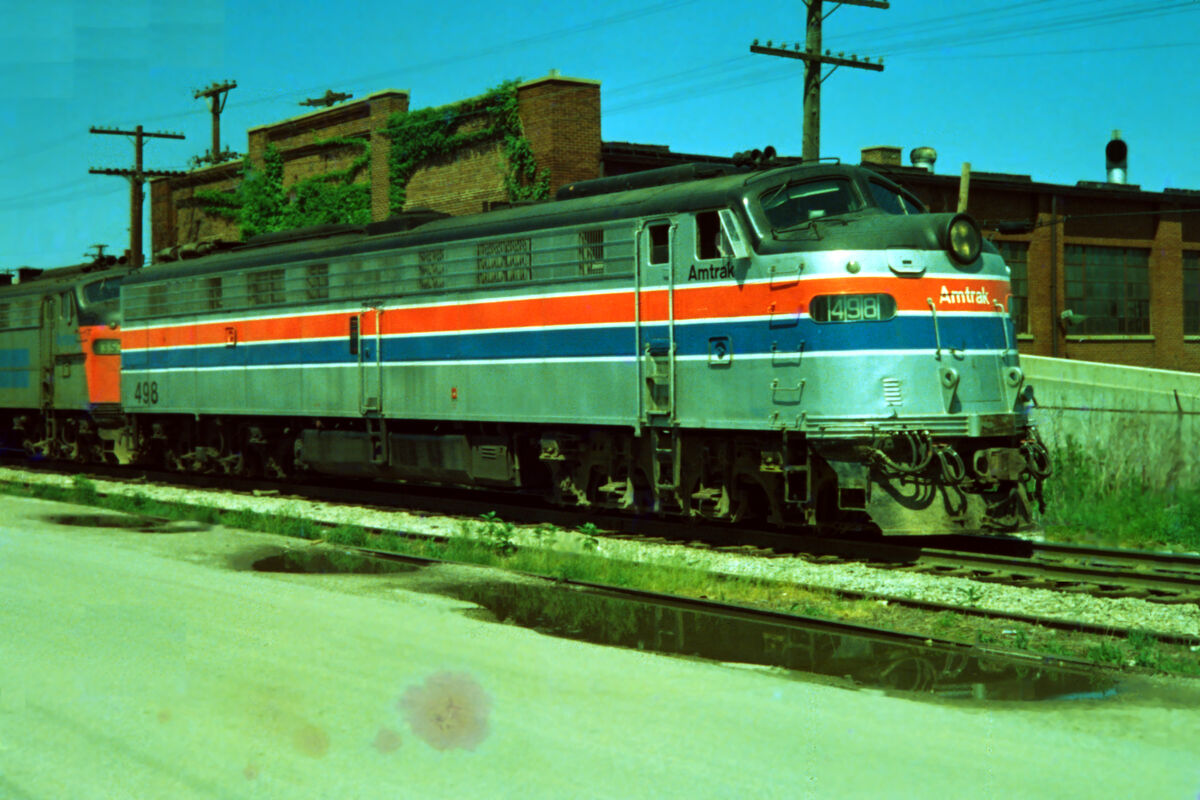
Southern Pacific heavy-steel baggage car
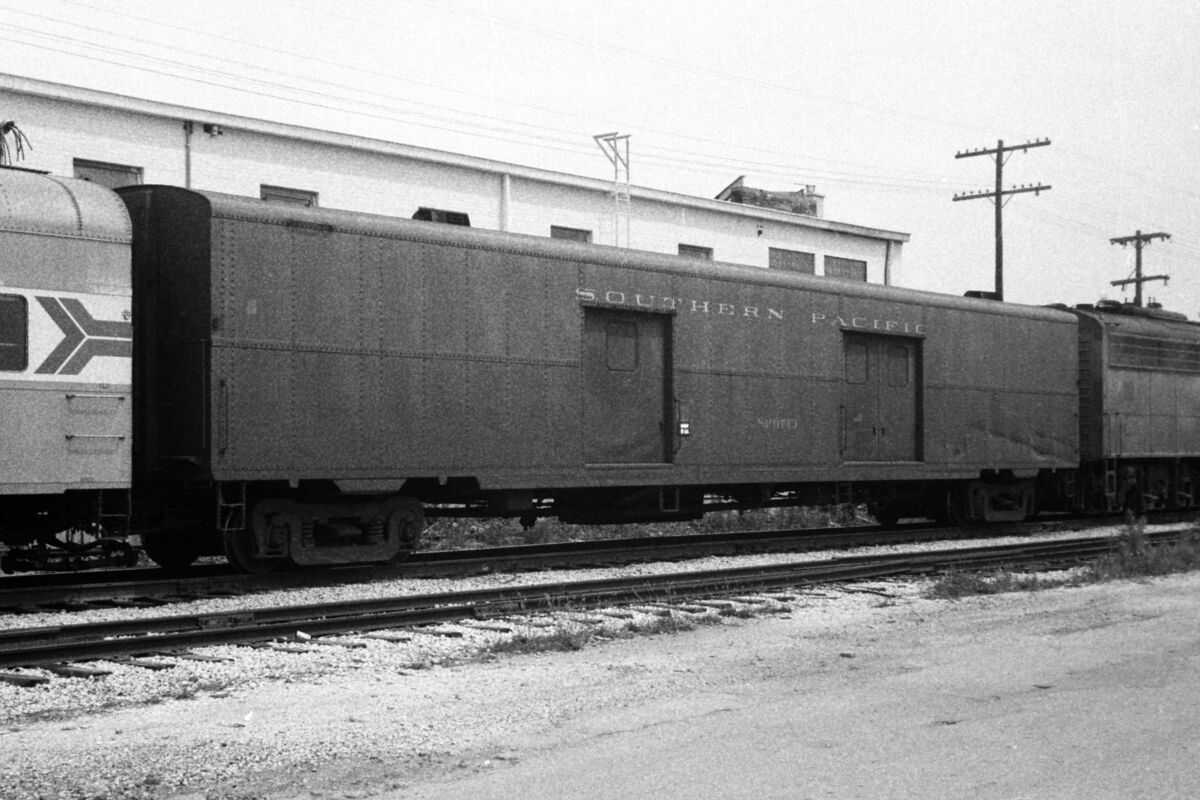
'dorm' car
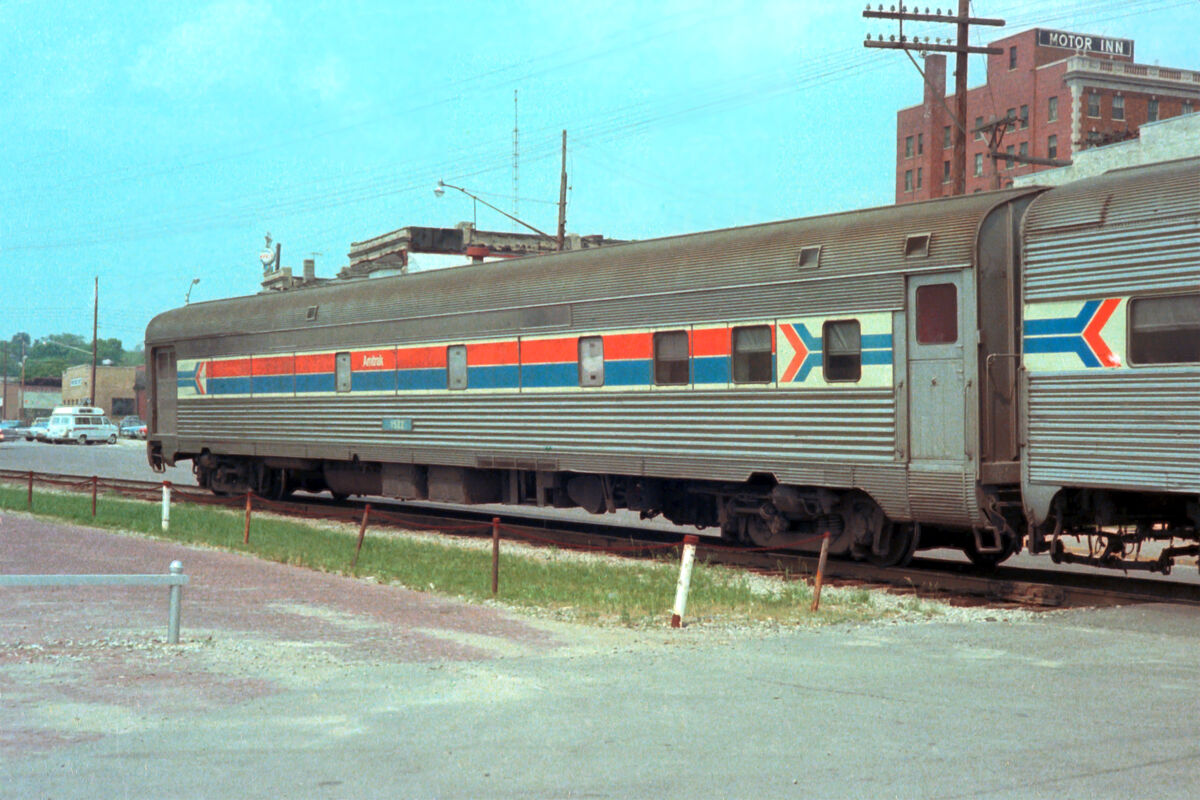
sleeping car
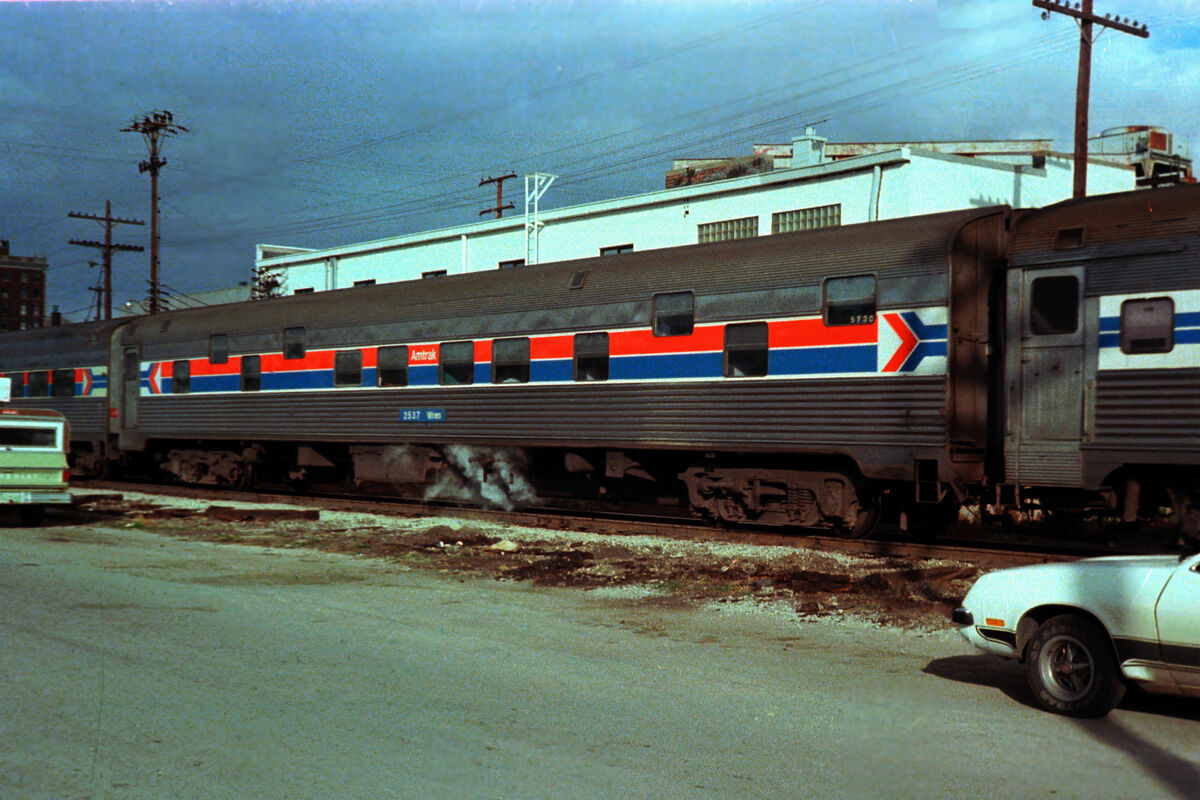
dining car
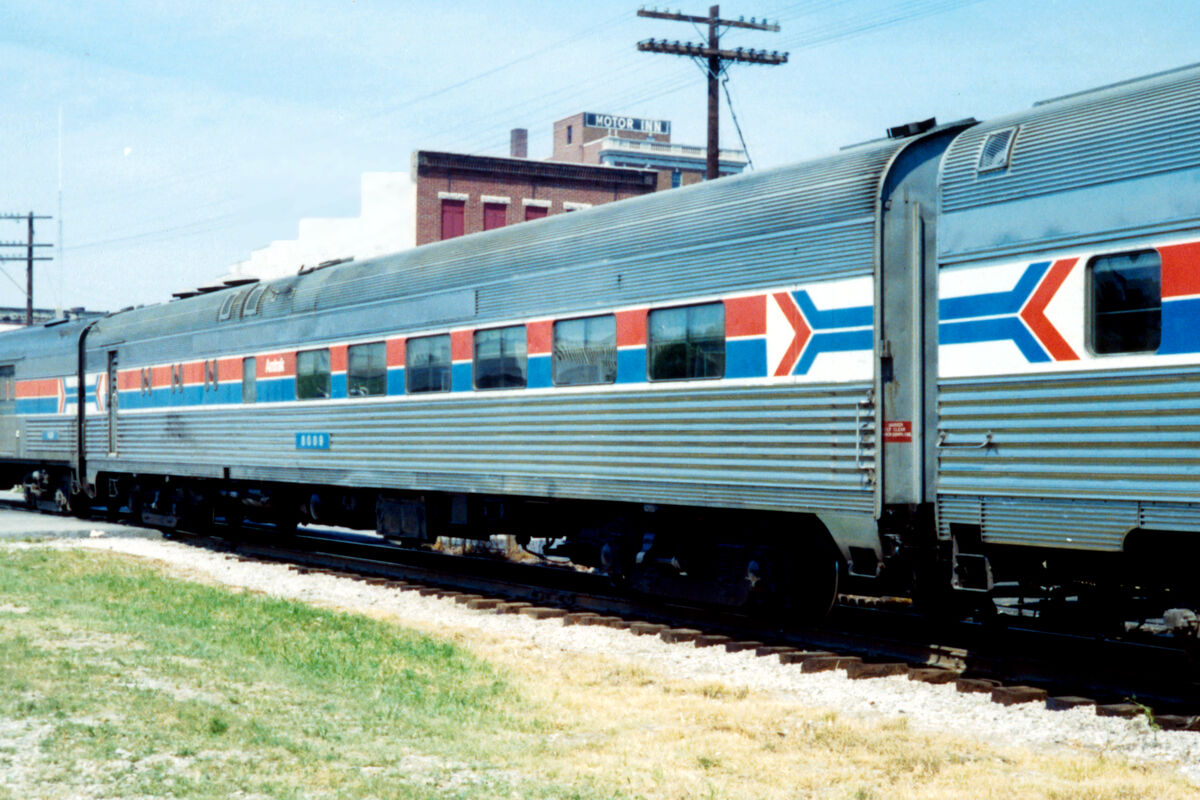
domed chair car
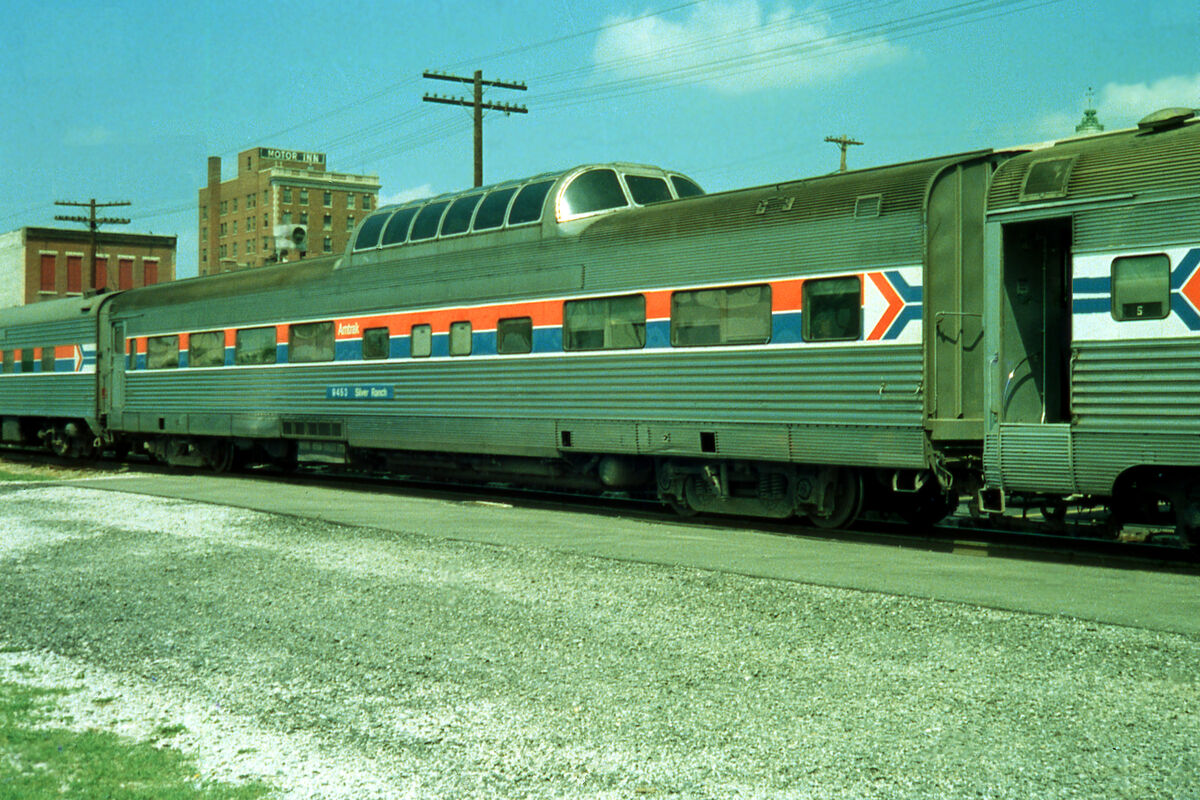
Illinois Central Gulf business car painted to match Amtrak cars {interesting to see on this consist, since it ran on tracks intersecting the ICG tracks}
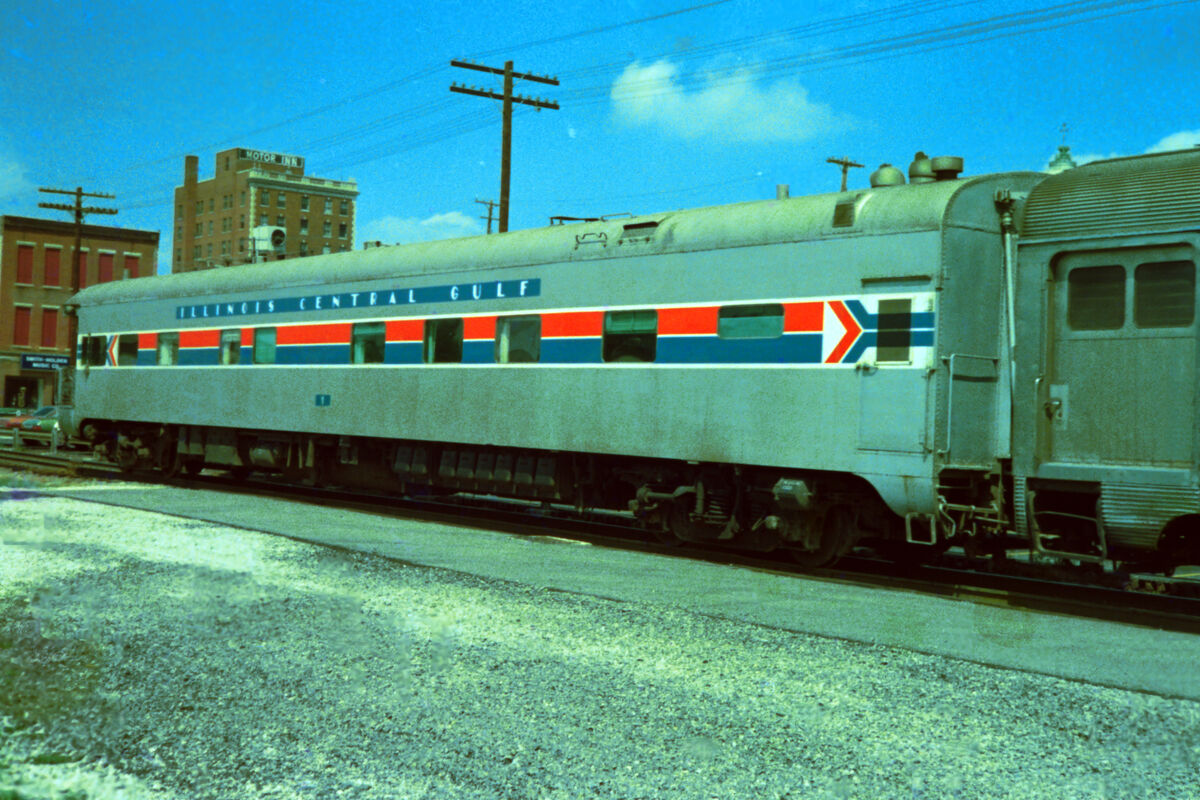
Mar 5, 2023 07:44:00 #
Mar 5, 2023 17:48:50 #
rehess wrote:
In the early days of Amtrak - mid 1970's - they used old 'legacy' cars to build trains for a Chicago-Miami service. I was a grad student at Indiana University, Bloomington, Indiana, in those days, and took these photos. These days, the Illinois Central tracks thru Bloomington are operated by a small regional railroad, and the L&N tracks (on which the train went thru town) are a walking trail.
Nice find, or maybe you knew where they were all this time as opposed to me who is not so organized. It is neat to be reminded of our history.
Just for the fun of the challenge on a Sunday afternoon, I took your first photo and worked to get rid of the green cast and making adjustment to the brightness and constrat. I have attached my experimental results. I know that I was working from aq smaller sized image since there was no "download" link available. So, this example is not set in concrete. --Richard
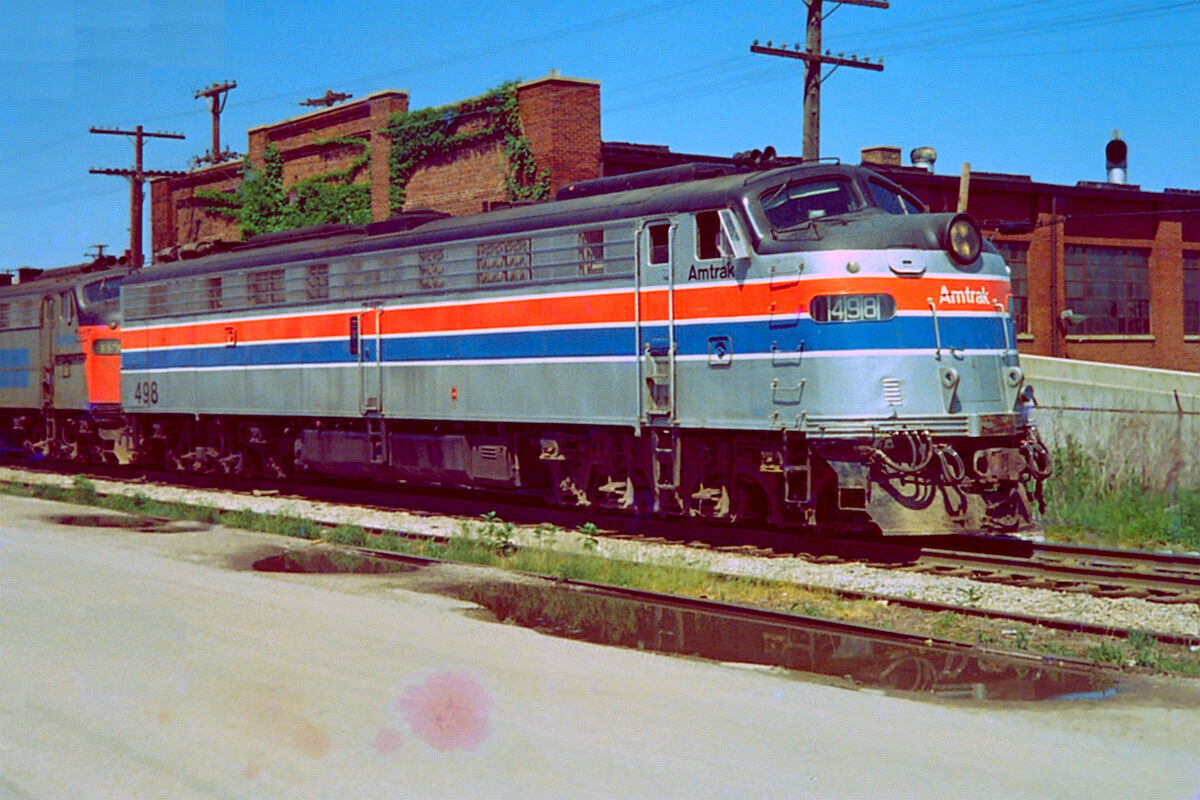
Mar 6, 2023 09:20:56 #
profbowman wrote:
Nice find, or maybe you knew where they were all t... (show quote)
Unlike later years, when I settled on Kodak’s “KM” slide film {for which Kodak said the colors would last for 100 years}, I guess I took that shot with Kodak’s “C” color negative film. I had thought it showed some color shift from blue to yellow.
Mar 19, 2023 11:47:24 #
profbowman wrote:
Nice find, or maybe you knew where they were all t... (show quote)
I was tempted to do the same thing. Even with your changes, it still isn't right. Perhaps cutting back a bit on the vibrance is needed?
Here is your modified image with the saturation reduced just a tiny amount making it look more natural. And I removed the splot on the road.
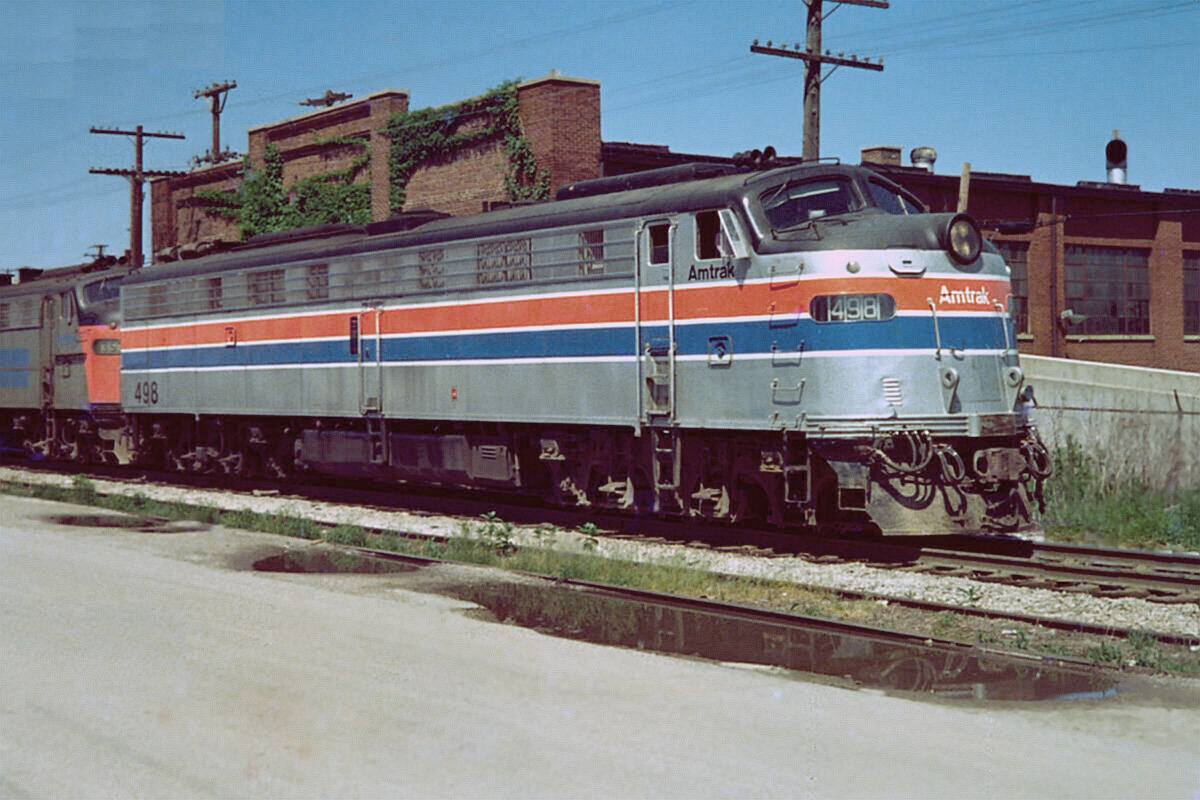
Mar 19, 2023 14:00:54 #
JimH123 wrote:
I was tempted to do the same thing. Even with your changes, it still isn't right. Perhaps cutting back a bit on the vibrance is needed?
Here is your modified image with the saturation reduced just a tiny amount making it look more natural. And I removed the splot on the road.
Here is your modified image with the saturation reduced just a tiny amount making it look more natural. And I removed the splot on the road.
For a scanned image, you may have it as good as you can get it. Although it does seem like one should be able to make it even more realistic. BTW, I left the spot on the road because I am a believer in recording what I see.
 --Richard
--RichardMar 19, 2023 15:39:54 #
profbowman wrote:
For a scanned image, you may have it as good as you can get it. Although it does seem like one should be able to make it even more realistic. BTW, I left the spot on the road because I am a believer in recording what I see.  --Richard
--Richard
 --Richard
--RichardI assumed the spot wasn't in the original image and something had contaminated the image.
Mar 19, 2023 15:49:37 #
JimH123 wrote:
I assumed the spot wasn't in the original image and something had contaminated the image.
As I said, these were old negatives {at the other end of my career}, so I wasn’t quite sure what was really there, and what was contamination {except the train cars really were there}.
Mar 19, 2023 16:11:55 #
There is more that I can do to it. In this case, I used Topaz's PhotoAI and increased the resolution by 2x. This had a positive effect. Everyrhing is sharper.
Mar 19, 2023 17:47:09 #
JimH123 wrote:
I assumed the spot wasn't in the original image and something had contaminated the image.
You are so right. That spot was probably a thumbprint or such like. --Riichard
Mar 19, 2023 20:14:12 #
JimH123 wrote:
There is more that I can do to it. In this case, I used Topaz's PhotoAI and increased the resolution by 2x. This had a positive effect. Everyrhing is sharper.
Jim, you have done some good work on restoring this photo. However, I do have a few comments.
First, doubling one dimension of a photo actually generates four times as many pixels. Whether we should call that a 2x or a 4x increase is up for discussion.
More importantly to me is what we are trying to do with a photo. In the case of these what were taken by R. E. Hess and scanned later, the purpose would seem to be to record and preserve history.
So, to me, using AI and increasing the resolution are both adding info which was not in the original scan and thus are not historic. Also, we cannot compare two images and say one is better unless we have the same number of pixels. So, I took you result from AI and enlargement, and I made it 1200 pixels on the long side. To me, that image was then not any sharper than the one you had made earlier from my experiment.
If we are aiming for "art," then using AI and increasing the resolution are both very acceptable.
Just my thoughts and opinions. --Richard
Mar 19, 2023 21:35:40 #
profbowman wrote:
Jim, you have done some good work on restoring thi... (show quote)
OK - you guys win.
Here are the original bits to play with if you want to.
As I said at the beginning I found those shots to be interesting, because I found it interesting what Amtrak had to work with if they wanted to expand in their early days. I was a grad student in those days and had limited photographic knowledge, I didn't know about diffraction {in the sense that photographers today use the term, but I had studied it as an undergraduate physics minor}, so I most likely took those shots at something around F/16-F/22 because I would have been very uncertain of focusing for these large moving objects, so I would expect nearly everything to be "in focus".
Mar 19, 2023 22:44:05 #
profbowman wrote:
You are so right. That spot was probably a thumbprint or such like. --Riichard
When we call it 2x. It means doubling the number of pixels in both the X and in the Y axis. And yes, it is 4x the number of pixels.
As for inventing new pixels - yes it is, BUT, it is getting better and better as the software matures. Certainly an improvement over the earlier bicubic method used in early Photoshop.
And then suitability as for what you want to use it for. If your intent is to just enjoy looking at the image and having it look as nice as possible, this is a very good way to do this. If on the other hand, if perfect representation of the original is a must, then maybe you don't want to resize. User has to make this call.
Mar 19, 2023 23:41:23 #
JimH123 wrote:
When we call it 2x. It means doubling the number o... (show quote)
Well said. And those were the points I was getting at in my note..
Just so we remember that even as the AI software makes the additional or replacement pixels to more smoothly fit with the surrounding ones, the new pixels are not there in the original image. The smoothness could actually have been rough to begin with. There is no way that software can know wheat data lay between any two pixels in the origina image.
As a retired physicist and scientist who used computer science during all of my career including a lot of web and photographic work, I am just a stickler for us remembering this caveat. --Richard
Mar 20, 2023 12:07:31 #
rehess wrote:
OK - you guys win. br Here are the original bits t... (show quote)
Here is rework of your higher resolution image. I reduced the green, worked on the saturation and white balance. And I removed the color splot on the road. I did struggle a bit to exactly match the white balance that we were using yesterday. This image is 3000 x 2000 pixels or 6M pixels compared to the 1200 x 800 of the one yesterday.
The 2nd image is a side-by-side comparison of your larger sample (on left) compared to the resized image (2400 x 1600) from yesterday (on right) so we can judge the resize effect a little better. Note: I find resize software doesn't resize lettering very well at all as can be seen here. Notice also that the resized version did considerable noise reduction that made the paint job more smooth looking too.
If you want to reply, then register here. Registration is free and your account is created instantly, so you can post right away.


